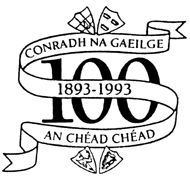|
DUBLIN:
The Sunday Press, 1 August 1993
This
is Day One of Conradh na Gaeilge's second century.
One hundred years ago yesterday, on 31 July 1893, Douglas Hyde, son of
a Church of Ireland clergyman, and Father William Hayden, S.J. and others
met together at the invitation of Eoin Mac Neill at Martin Kelly's civil
service academy at 9 Lower Sackville Street in Dublin.
At the instigation of Mac Neill, then an official at the Four Courts,
these ten very different personalities agreed to establish an organisation
to restore the rapidly declining Irish language. That organisation was
to challenge all the authority who sought to suppress the language, who
ensured it was banned in schools, public affairs, Councils and in all
forms of administration.
In 1893, Irish was practically outlawed, although spoken by as many as
800,000 people as their normal everyday tongue.
These ten men began a process to change the face of Ireland and make this
country a nation rather than a British province.
The odds were greatly against them. For most of the 800,000 whose native
language was Irish were by no means unhappy at pressures placed upon them
to change to a language they associated with power, possession, pride,
prosperity and prestige. For years they had been conditioned to accept
that Irish was a lesser tongue and the mark of a beaten people.
The very idea that the tide could be stopped and, perhaps, turned, was
revolutionary, if not Utopian.
The advances made in the past 100 years would have amazed the ten men
who met in Sackville Street. Something approaching a bilingual society
has been extablished slowly but surely. A modern literature now exists
in Irish. There is now public awareness and appreciation of the fundamental
importance to Ireland of its language.
The ten men who gathered together in Sackville Street hoped that a major
national resource would not be lost. Not all of them envisioned an Irish
state; it is not clear that all of them would have wished for a fully
Gaelic Ireland. But all of them knew what a tremendous loss the country
would suffer if Gaelic Ireland were finally to wither away and be replaced
by a British province.
One of the lesser known among the ten was Patrick Joseph Hogan,
who was born in 1868 in Limerick jail, where his father was Clerk. He
was a Barrister who was awarded the Brooke Scholarship. P.J. Hogan became
a civil servant in the Four Courts, where he worked alongside Eoin Mac
Neill, like a number of those who founded The Gaelic League —
or Conradh na Gaeilge.
Mr. Hogan, whose knowledge of Irish was limited, was later Registrar of
the High Court. Incidentally, one of his sons was the noted public servant
Patrick Sarsfield Hogan, and his grandson Paul Hogan played a spectacular
part in publicising the campaign to restore the Hugh Lane pictures to
Ireland.
Martin Kelly, the Clare man in whose Academy Conradh na Gaeilge
was founded, was a native Irish speaker from Dysert. He became deputy
Registrar of the Chancery Court and like P.J. Hogan was a civil servant
in the Four Courts. He was born in 1860 and died in Dublin at the age
of 45. Martin Kelly served for a time on the Gaelic League Executive and
was later active in the Drumcondra branch, of which the playwright Seán
O'Casey was Secretary.
Thomas Walker Ellerker, who was born in Yorkshire in 1868 and was
then living in Torquay Road in Foxrock, Co. Dublin, was a senior official
at the Four Courts and a friend of Mac Neill. He was not Irish, but he
had general cultural interests and appreciated the value of the Irish
language. His main interest in life was rifle shooting; he was a founder
of the Irish Civil Service Rifle Club.
Thomas O'Neill Russell, a Quaker who was born near Moate in 1826,
was a commercial traveller in the U.S. but a frequent visitor to Ireland.
He had returned some days before the inaugural meeting, and probably attended
it at Douglas Hyde's invitation. He was playwright, biographer and political
theorist, and under the name Reginald Tierney was the author of a successful
popular novel "The Struggles of Dick Massey" in 1860. His interest in
Irish began when as a boy at a fair in Athlone in 1841 he heard most people
speak a language which he did not understand.
James Michael Cogan was born at Annavilla in Dublin's North Circular
Road. At 18 he was the youngest of the founders. He was at first a civil
servant in the Census Office and later worked with the Revenue Commissioners
in the Four Courts. He was a friend of O'Neill Russell. Later he was one
of the Gaelic League's first language teachers. His parents were native
speakers and he spoke the language fluently. James Cogan emigrated to
Australia and died in Adelaide on 14 October 1898 at the age of 24.
Charles Perry Bushe, a relative of Edith Somerville and Violet
Martin ("Martin Ross"), also worked in the Four Courts. He was the eldest
son of the Master of the Queen's Bench. He lived in Waterloo Road in Dublin
and learned Irish from his ghillies on Galway lakes and from Séamus
Ó Muiris, a Dublin Corporation street cleaner who came from Annaghdown
in Galway. His grandfather, Charles Kendal Bushe M.P., voted against the
Act of Union. He served for a time on the Conradh na Gaeilge Executive,
but died at 69 only five years after helping to found the organisation.
Father William Hayden, S.J., was born at Carrickbeg, Co. Waterford,
also the home place of the celebrated Father Michael O'Hickey, in 1839
and was educated at Clonglowes Wood before becoming a Jesuit in 1862.
He met Eoin Mac Neill while studying Irish at University.
Pádraig Ó Briain, a native Irish speaker from Ballydehob
in Cork, started an Irish language class at the Mechanics' Institute in
Dublin some 15 years before Conradh na Gaeilge was founded. He was a compositor
who learned his craft in the U.S. He owned a printing works at 46 Cuffe
Street in Dublin, and also worked as a compositor with The Irish Times.
Ó Briain's friendship with Douglas Hyde was based as much on their
common interest in German as in Irish. He was active in the Gaelic Union
and later in the celebrated and controversial Craobh an Chéitinnigh
of the Gaelic League.
When recalling his presence at the first meeting many years later, Douglas
Hyde said that Pádraig Ó Briain spoke 'the sweetest Irish
I ever heard'.
Douglas Hyde, who was born in Castlerea in 1860 and died in 1949,
having served as first President of Ireland, was already a noted literary,
cultural and academic figure by 1893. His interest in the Irish language
was well known and his status in the cultural community was such that
it was natural Eoin Mac Neill should want him to be the first President
of Conradh na Gaeilge. He was already President of the National Literary
Society.
While immediately agreeing to attend the meeting and being happy to become
its President, Douglas Hyde clearly had no notion of what he was letting
himself in for. The Gaelic League took over his whole life and became
his chief, but unpaid, occupation. In all, he spent 22 years as the active
and untiring President of an ever-increasing movement. Conradh na Gaeilge
made him, and he made it. Through it and because of it, he evolved as
a maker of a new Ireland. No one is more associated in the public mind
with the Gaelic League and the Irish restoration movement than Douglas
Hyde, or Dúbhghlas de h-Íde as he is called in Irish.
No one else is regarded generally as being a greater Irish person in any
way than Dr. Hyde, a son of the Rectory and a descendant of invaders.
Eoin Mac Neill, principal founder of the Gaelic League, was a 26-year-old
civil servant in the Four Courts when he set about the establishment of
a movement to halt the retreat of Irish and restore it to former status.
He was from Glenarm in Co. Antrim, at the time an Irish-speaking area,
and he was fortunate in having as Irish-speaking nursemaid, Peg Carnegie.
He was an especially gifted child and there was some suggestion that he
might become a priest. Curiously enough, it was also intended that Douglas
Hyde should become a priest of the Church of Ireland.
-30-
|
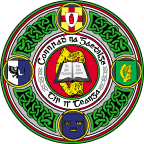
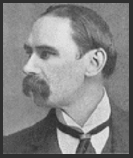
Douglas
Hyde
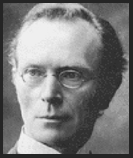
Eoin
Mac Neill
|
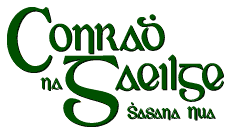

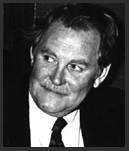 *******
******* 